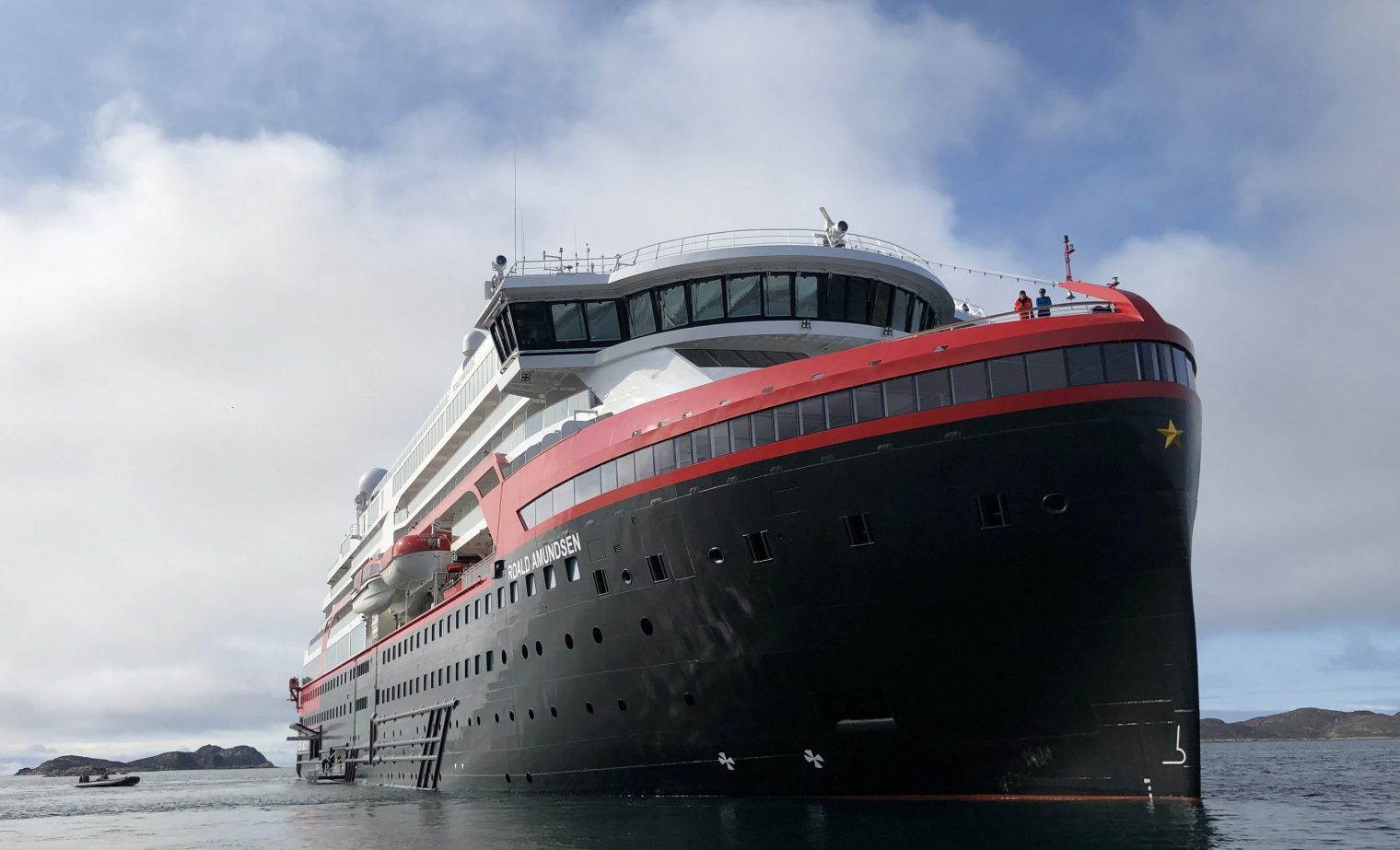We recently made it through the Northwest Passage on the MS Roald Amundsen, a diesel-hybrid cruise ship.
What could be dumber than putting a huge bank of batteries into a machine that needs to be generating power constantly, e.g., to run lights, water desalination, air conditioning, sewage treatment, etc.?
At a talk by the ship’s chief engineer, Jonny Johnsen, we learned that this may make good engineering sense. The key insight is that it is most efficient to run any of the four diesel engines at 80 percent power. Although the ship can sail for 30 minutes at 14 knots on the battery alone, that’s not the point of the batteries. The idea is to have a power reserve that does not require keeping an extra engine at idle. If the ship needs a sudden burst of power for maneuvering, the power comes from the battery while perhaps just a single engine is running. After the demand is gone, the engine keeps running at 80 percent to recharge the batteries.
The batteries enable the crew to run just one engine without fearing a blackout (though maybe California-based passengers would feel right at home in such an event?).
The engines are reasonably efficient to begin with, over 50 percent before heat recovery, which is used to heat water, heat the cabins, heat the pool/hot tubs, and help with desalinization. But having a big bank of batteries makes the overall trip more efficient. The engineer said that he expected we would use 300,000 liters of diesel for the trip from Greenland to Nome, Alaska. Divided by the 472 passengers who were on board, that’s only 169 gallons in a three-week period. An SUV-owning American who liked to drive a lot might consume more!
More engineering facts:
- the ship produces 156 cubic meters/day of fresh water via two RO systems (force seawater through a membrane and dump the brine overboard); 300,000 liters per day
- the ship does not anchor; computers, GPS, swiveling propellers (2) and bow thrusters (2) maintain station (as in https://philip.greenspun.com/blog/2019/08/21/movie-the-last-breath/ )
- for NOx emissions control, the engines use the same “add blue” urea as European diesel cars
- the ship has a conventional anti-roll stabilizer system
- the ship is rated Polar Class 6, which means we could go through 70 cm of level ice

It’s a rare post when Greenspun is positive about being green. He’s slowly tilting towards a hybrid vehicle.
156 cubic meters of water is 156,000 liters, not 300,000.
300,000 liters is the amount of additional sea water that runs through to net 156,000 liters of fresh water.
Diesel-electric hybrids are also used on ships (and trains) without a battery. Attaching a generator to the diesel allows it to run at optimal rpms for efficiency, then attaching the generator to an electric motor allows the speed to be reduced to drive the props with less loss than mechanical gears.
You did not say but I bet this ship has exhaust scrubbers and related technology to allow it to meet IMO 2020 rules. The world wide shipping industry is going through a major update to lower sulfur fuels effective Jan 1 2020. So lots of ships are being retrofitted to use lower sulfur fuel and to meet the associated pollution rules.
What is IMO 2020? The International Maritime Organisation (IMO) has ruled that from 1 January 2020, marine sector emissions in international waters be slashed. The marine sector will have to reduce sulphur emissions by over 80% by switching to lower sulphur fuels.
This is a good article that talks about all the impacts and issues associated with IMO 2020.
https://www.cnbc.com/2019/03/01/biggest-change-in-fuel-since-leaded-gas-went-away-could-raise-prices.html